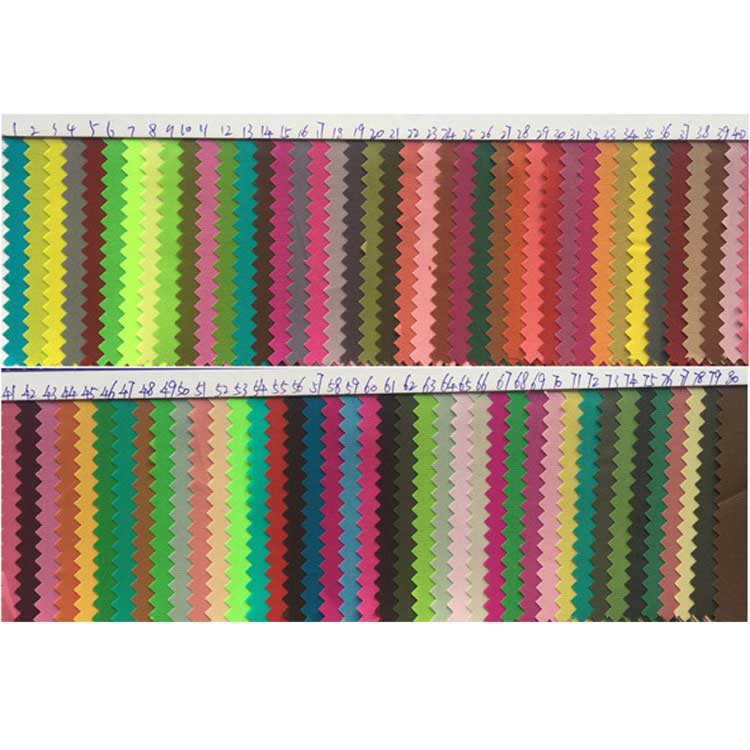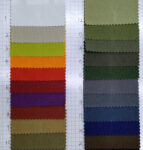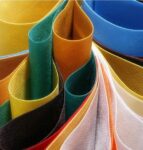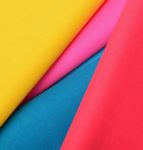Polyester is a popular fabric known for its durability, versatility, and affordability. Many people wonder if polyester is waterproof and suitable for use in various applications. In this article, we will delve into the water resistance of polyester, examining its inherent properties, treatments, and applications where it can provide some level of protection against water. So, let’s settle the question once and for all: Is polyester truly waterproof?
Before we determine whether polyester is waterproof, let’s understand its nature. Polyester is a synthetic fabric made from petroleum-based fibers. It is known for its strength, wrinkle resistance, and quick-drying properties. However, in its untreated form, polyester is not inherently waterproof. It has a moderately hydrophobic nature, meaning it repels water to some degree but can still absorb moisture under certain conditions.
Water Resistance Treatments
To enhance the water resistance of polyester, various treatments can be applied. One common method is the application of waterproof coatings. These coatings create a thin, protective layer on the fabric’s surface, preventing water from seeping through. Another popular approach is laminating polyester with waterproof membranes. These membranes have micropores that allow moisture vapor to escape while blocking water droplets. Additionally, some polyester fabrics are blended with hydrophobic fibers or coated with durable water repellents (DWR) to improve their water resistance.
Advantages of polyester fabric in keeping you dry
Polyester fabric offers several advantages when it comes to keeping you dry in various conditions. Firstly, its water-repellent properties make it highly effective at repelling rain, snow, and other forms of precipitation. This makes polyester garments ideal for outdoor activities, such as hiking, camping, or skiing, where exposure to wet conditions is common.
Additionally, polyester’s ability to wick away moisture from the skin sets it apart from other fabrics. The hydrophobic nature of polyester means that it doesn’t retain sweat or moisture, allowing it to evaporate quickly. This effective moisture management helps regulate body temperature and keeps you feeling dry and comfortable during physical activities or in humid environments.
Moreover, polyester is lightweight and dries quickly, making it a practical choice for travel or when you need to pack light. Its durability ensures that the fabric retains its water-repellent properties even after repeated use and washing. These advantages make polyester a reliable option for staying dry and comfortable in a wide range of situations.
Testing the water-repellent properties of polyester fabric
To determine the effectiveness of polyester’s water-repellent properties, extensive testing is conducted using various methods. One common test is the spray test, where a controlled amount of water is sprayed onto the fabric surface. The water is observed to see if it beads up and rolls off or if it penetrates the fabric. This test helps evaluate the fabric’s ability to repel water and sheds light on its durability over time.
Another test involves measuring the fabric’s ability to wick away moisture. A moisture management tester is used to determine how quickly the fabric absorbs and spreads moisture. This test assesses the fabric’s ability to keep the skin dry by drawing sweat away from the body and promoting evaporation.
Through rigorous testing, polyester consistently demonstrates its superior water-repellent properties, making it a reliable choice for staying dry in various conditions.
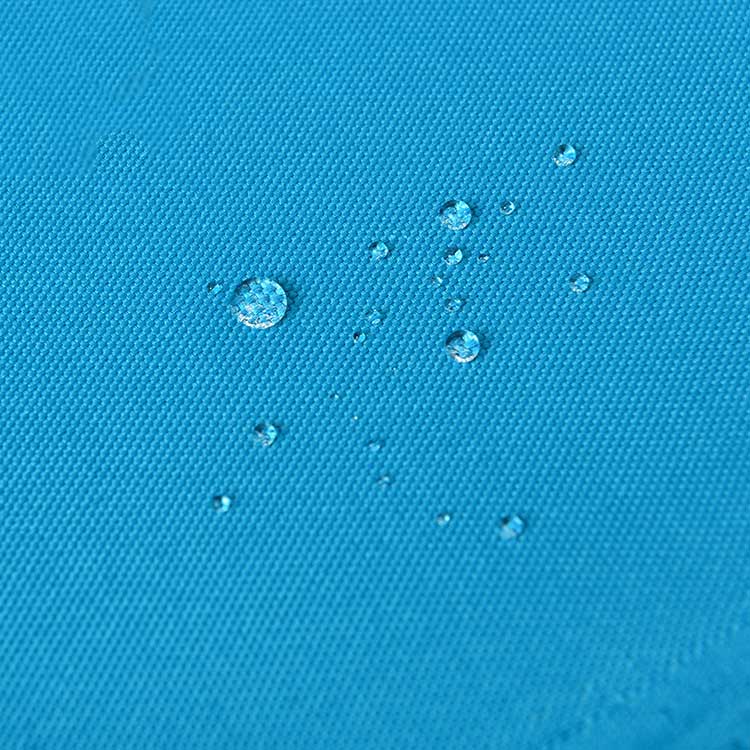
Comparing polyester with other fabric materials in terms of water resistance
While polyester excels at repelling water, it’s worth exploring how it compares to other fabric materials commonly used for water resistance. One popular alternative is nylon, another synthetic fabric known for its durability and water-repellent properties. While nylon is effective at repelling water, it can absorb moisture and take longer to dry compared to polyester. This difference in moisture management makes polyester a preferred choice for activities where staying dry is crucial.
Natural fibers, such as cotton or wool, are not inherently water-repellent. They can absorb moisture, become heavy, and take longer to dry. However, advancements in fabric technology have led to the development of water-resistant versions of these natural fibers. For instance, cotton can be treated with water-repellent finishes to enhance its ability to repel water. While these treatments can improve water resistance, they may not match the performance and durability of polyester.
Overall, polyester stands out as a reliable choice for water resistance, offering superior moisture management and quick-drying properties compared to other fabric materials.
Tips for maintaining the water-repellent properties of polyester fabric
To ensure that your polyester garments maintain their water-repellent properties, proper care is essential. Here are some tips to help you extend the lifespan of your polyester clothing:
1. Follow the care instructions provided by the manufacturer. This includes washing instructions, temperature recommendations, and any specific treatments or products recommended for maintaining water resistance.
2. Avoid using fabric softeners or bleach, as these can compromise the fabric’s water-repellent qualities. Instead, opt for mild detergents designed for synthetic fabrics.
3. When washing polyester garments, turn them inside out to protect the outer surface. This helps minimize abrasion and preserves the fabric’s water-repellent finish.
4. Use a gentle cycle and cold water when machine washing polyester. High heat can damage the fabric’s structure and reduce its water-repellent properties.
5. If necessary, reapply a water-repellent treatment to your polyester clothing. This can help restore the fabric’s ability to repel water and maintain its performance over time.
By following these tips, you can ensure that your polyester garments continue to keep you dry and comfortable for years to come.
Popular clothing items made with water-repellent polyester fabric
Water-repellent polyester fabric has become increasingly popular in the fashion and outdoor industries. From jackets and pants to footwear and accessories, here are some popular clothing items made with this innovative fabric:
1. Rain jackets: Water-repellent polyester rain jackets are a staple for anyone looking to stay dry during wet weather. These jackets offer excellent protection against rain while allowing moisture to escape, keeping you comfortable throughout the day.
2. Athletic wear: Polyester’s moisture-wicking properties make it an ideal choice for sportswear. From moisture-wicking t-shirts and shorts to running leggings and sports bras, polyester garments help keep athletes dry and focused during intense workouts.
3. Travel gear: Polyester travel gear, such as lightweight jackets, quick-drying pants, and backpacks, are designed to withstand various weather conditions while ensuring optimal comfort and functionality. These water-repellent items are perfect for adventurers on the go.
4. Outdoor accessories: Polyester is also used in the production of accessories like hats, gloves, and socks. These items provide protection against the elements while keeping you dry and comfortable during outdoor activities.
The versatility and effectiveness of water-repellent polyester fabric have made it a preferred choice for a wide range of clothing items across different industries.
Debunking common myths about polyester fabric and water resistance
Despite its proven water-repellent properties, polyester has faced some misconceptions over the years. Let’s debunk some common myths surrounding polyester fabric and its ability to repel water:
1. Myth: Polyester fabric doesn’t breathe and traps moisture. Reality: While polyester is not as breathable as natural fibers, advancements in fabric technology have improved its breathability. Polyester’s moisture-wicking properties help draw moisture away from the skin, allowing it to evaporate quickly.
2. Myth: Polyester fabric is uncomfortable and causes skin irritation. Reality: Polyester fabrics have come a long way in terms of comfort and softness. High-quality polyester blends and innovative manufacturing techniques ensure that the fabric feels comfortable against the skin and minimizes irritation.
3. Myth: Polyester fabric loses its water-repellent properties over time. Reality: While it’s true that the water-repellent finish on polyester garments may wear off over time, proper care and maintenance, such as reapplying water-repellent treatments, can help restore and prolong the fabric’s water resistance.
By dispelling these myths, we can appreciate the true capabilities of polyester fabric and its effectiveness in keeping us dry.
As sustainability becomes increasingly important in the fashion industry, eco-friendly alternatives to polyester for water resistance have emerged. One such alternative is recycled polyester, also known as rPET. Recycled polyester is made from post-consumer plastic bottles and offers the same water-repellent properties as traditional polyester but with a reduced environmental impact.
Another sustainable option is plant-based materials, such as Tencel or bamboo, which have natural moisture-wicking properties. These materials are biodegradable and renewable, making them attractive choices for environmentally conscious consumers.
Furthermore, advancements in fabric technology continue to explore new sustainable solutions for water resistance, such as bio-based coatings or natural water-repellent finishes derived from plant extracts.
By considering these sustainable alternatives, we can make conscious choices that align with our values while still enjoying the benefits of water-repellent fabrics.
Is polyester a reliable choice for staying dry?
In conclusion, polyester fabric has proven itself as a reliable choice for staying dry in various conditions. Its unique molecular structure, hydrophobic properties, and effective moisture management make it a go-to option for outdoor enthusiasts, athletes, and everyday individuals seeking comfort and protection from wet weather.
Polyester’s ability to repel water, quick-drying nature, and durability set it apart from other fabric materials commonly used for water resistance. Through rigorous testing, polyester consistently demonstrates its superior water-repellent properties, making it a reliable choice for staying dry in style.
While polyester has faced some misconceptions, advancements in fabric technology have addressed these concerns, making polyester garments comfortable, breathable, and skin-friendly. Additionally, sustainable alternatives, such as recycled polyester and plant-based materials, offer eco-friendly options for those seeking water-resistant fabrics with reduced environmental impact.
So, the next time you find yourself in unpredictable weather conditions, consider polyester as a reliable companion to keep you dry and comfortable. Embrace the science behind this versatile fabric and unlock the secrets of polyester’s ability to repel water. Stay dry, stay stylish, and enjoy the great outdoors with confidence!
